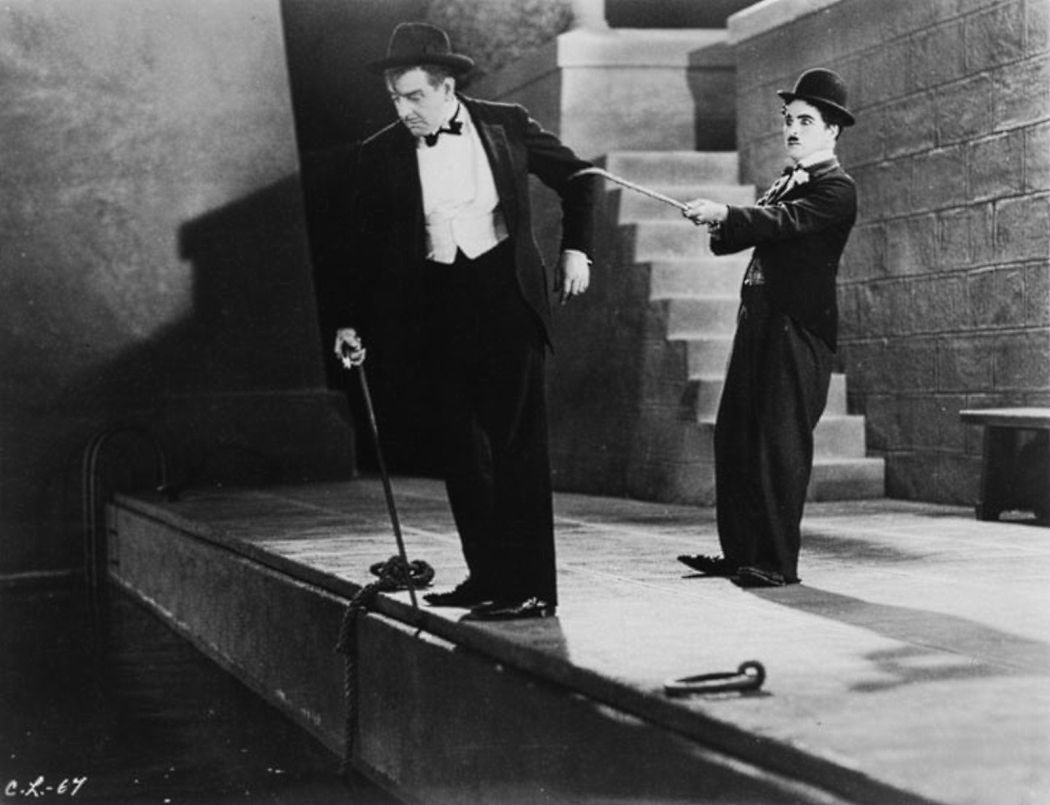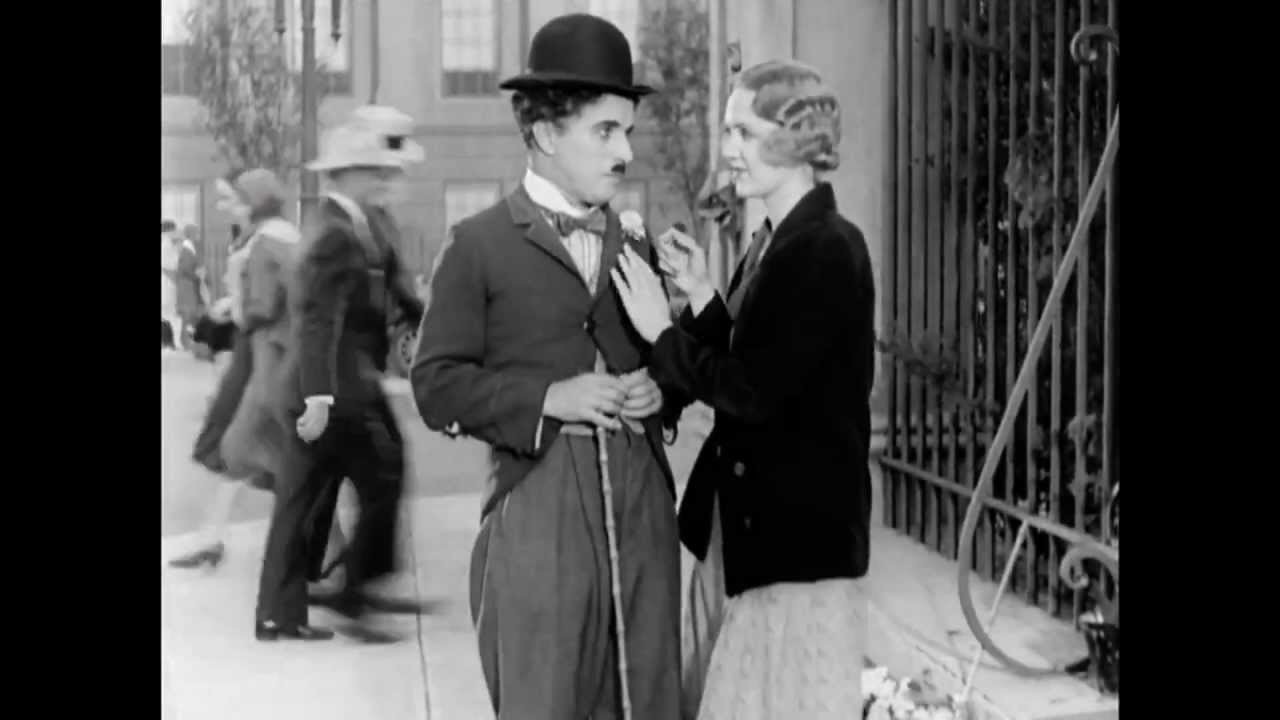Choosing a favorite Charlie Chaplin film is a bit like deciding which of your kids you prefer. It feels intrinsically wrong. Still, general critical consensus has elevated City Lights above the rest, routinely placing the 1931 masterpiece on lists of the greatest movies of all time.
It’s not hard to see why. City Lights encapsulates so much of Chaplin’s appeal: a plot summary is really just a list of genial gags, childlike miming, and sentimental romance — precisely what made The Tramp one of cinema’s most beloved fixtures around the world. The fact that Chaplin also poured himself into the film with characteristic mania, and stubbornly shot a silent when everyone but him recognized that ship had probably sailed, only generates more respect. Even contextualized in the roughly 10-year span that also gave us The Gold Rush, earlier Great Movie entry The Circus, and Modern Times — surely one of the greatest runs a director/star ever had — City Lights stands out.
Central to its success is the way Chaplin strings together the fundamentally episodic gag-structure into a coherent feature. Unlike more than a few silent comedies, City Lights plays like an uninterrupted narrative, complete with character arcs and call-backs, rather than a collection of bits. Through unfussy direction and crisp editing, Chaplin integrated some of his more manic sensibilities with the larger story.
Still, those gags! The Tramp’s first encounter with the Eccentric Millionaire (a late-cast Harry Myers, getting some of the biggest laughs) is a keeper, an intricate little dance that rather darkly uses a suicide attempt as a set-up.

Chaplin’s character saves the millionaire, of course — one of several times throughout his career that the penniless fool comes to the rescue of the better-off, seeing from his disrespected and classless vantage point all the beauty in the world that others do not. (See again: Chaplin’s sentimentality.)
There’s more to it than that, though, and, in City Lights, Chaplin goes for broke spelling it out. At issue is the notion of seeing itself, of being seen by the larger society. It’s no accident that his chaste love interest here is a blind woman selling flowers on the street (Virginia Cherill), or that the millionaire can only recognize the new best friend who saved his life when inebriated, blind drunk. The Tramp waddles through the world almost entirely unseen, a fact that makes City Lights‘ justly famous final scene that much sweeter. (Notably, from a storytelling perspective, it was the first scene written and shot; in that way, City Lights is a narrative constructed in reverse.)
It’s useful to compare Chaplin’s persona with his contemporaneous greats, noted go-getters Buster Keaton and Harold Lloyd. It’s impossible to think of a Keaton character outside of their (sometimes accidental) profession and ambition: conducting a train, flying a hot-air balloon, being a film projectionist. In Safety Last!, Lloyd’s character’s attempt at upward mobility is the root cause of all his trouble: the film plays like a slapstick-heavy episode of The Office, where we cringe at his ever-more absurd attempts to cover up a lie about his job that he never should’ve told in the first place, to impress a girl.
The Tramp, on the other hand, is defined by his itinerant nature. If he lands a gig — say, as a trapeze artist — it’s a foregone conclusion that he has never even seen a trapeze before. There is little confidence that, one day, he will be the best, and his manic, flailing attempts only underscore this. He’s much more likely to be the guy awakened by a crowd at the unveiling of public art he slept on the night before.
Also, while both Keaton and Lloyd relish send-ups of their masculinity, it’s somehow easier to see them as sexual beings than it is with The Tramp. In The General, Safety Last!, and City Lights, much of the plot revolves around attempts to get the girl, but in only two of those cases is it imaginable that they’d ever be intimate at all. Keaton’s absurdist heroics and Lloyd’s unwitting feat of building-climbing bravery are both engineered to demonstrate virility on some level, but watching The Tramp role-play as a rich man and scheme to pay off the Flower Girl’s debts is much more like observing a 10-year-old shyly handing off a Valentine’s Day Card he made in class. It’s, basically, kind of adorable.
Chaplin’s profound lack of virility is put on hilarious display in the boxing scene, an expertly choreographed gag that proves eminently relatable for anyone who’s ever dodged a fight. (Which is to say, probably everyone.)
This is the fundamentally childlike appeal of Chaplin, and a partial explanation why so many audiences loved him. Rooted in mime, prioritizing small gesture and (non)reaction over big set-pieces and manic vaudeville, The Tramp is instantly understandable. The fact that he doesn’t even seem to talk much (again, a difference from the rather chatty-looking Keaton and Lloyd) also contributes to this sense — he’s honest, he’s not really trying to get anywhere, and he’s pretty happy on the margins, if he can just get out of this next scrape. All around the globe, people recognized his type and loved him for it.
My personal preference has always been for the existentialist absurdity of Keaton, the earnest, accepting, stone-faced protagonist in a world gone mad. In some sense, I think Keaton is for adults, or at least for those who can appreciate the disjunct between his sure sense of self and mission even as he’s waylaid and driven off course by outside events he doesn’t even notice, much less understand.
But The Tramp, the one Chaplin had arrived at by City Lights, is for the kids. That’s a compliment. Chaplin channels everyone who only has access to the resources she’s given, finds, or stumbles into, doesn’t have a tremendous respect for authority or pomp and circumstance, is rigorously honest but not above re-routing some funds when possible, and generally waddles through life, accepting and honest. The innocence of the character is, you’d think, its defining aspect.
Fascinatingly, this wasn’t always the case:
The character Chaplin plays in those early Keystone one-reelers is not the Tramp of The Kid or City Lights. He’s meaner, tougher and certainly not a rough sleeper. He is very often employed (as a piano mover, a waiter, a property man at a film studio), sometimes with a home, a wife and child. He’s a pleasure-seeking anti-authoritarian and a flirt, often prone to sneaking a drink, but not because he doesn’t have the money to pay for it.
These darker resonances remain even in City Lights — the suicide attempt, the fact that he is only loved by an inebriate and a blind woman who thinks he’s rich — but the rougher edges were sanded down by 1931. Chaplin was creating a character he thought the times required.
He also knew that the character wouldn’t last much longer. The introduction of sound (which Chaplin predicted wouldn’t last three years) played havoc with a lot of silent film conventions, but a recurring character so deeply rooted in mime and a kind of silent universality would be especially difficult to sustain. (Jacques Tati’s M. Hulot films might be the closest we got , but those would take two decades to emerge.)
City Lights represented perhaps the high-point of the end of The Silent Era, at least as far as The Tramp was concerned. It’s a fascinating film that rewards repeat viewings. Serious, silly, melancholy, romantic, and featuring a long scene where a guy repeatedly pours booze down another guy’s pants for no good reason. What more do you want?
When he made it, three years into the era of sound, Chaplin must have known that “City Lights” might be his last silent film; he considered making a talkie, but decided against it, and although the film has a full musical score (composed by Chaplin) and sound effects, it has no speech. Audiences at the time would have appreciated his opening in-joke; the film begins with political speeches, but what emerges from the mouths of the speakers are unintelligible squawks–Chaplin’s dig at dialogue. When he made “Modern Times” five years later, Chaplin allowed speech onto the soundtrack, but once again the Tramp remained silent except for some gibberish.
There was perfect logic here: Speech was not how the Tramp really expressed himself. In most silent films there’s the illusion that the characters are speaking, even though we can’t hear them. Buster Keaton’s characters, for example, are clearly talkative. But the Tramp is more of a mime, a person for whom body language serves as speech. He exists somehow on a different plane than the other characters; he stands outside their lives and realities, is judged on his appearance, is homeless and without true friends or family, and interacts with the world mostly through his actions. Although he can sometimes be seen to speak, he doesn’t need to; unlike most of the characters in silent films, he could have existed comfortably in a silent world.

